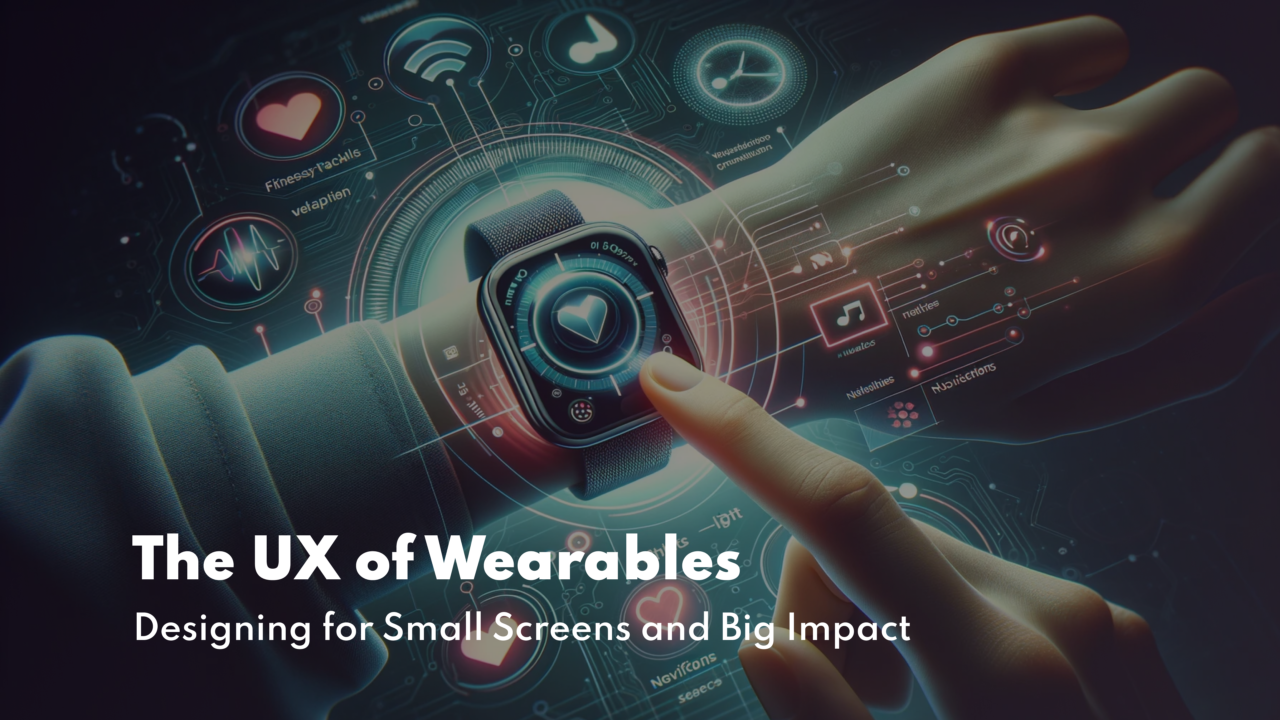Introduction
In the past few years, wearables technology has permeated more and more aspects of our everyday lives. Fitbits, augmented reality glasses, and smartwatches are just a few examples of the gadgets that have drastically altered our interactions with wearable technology. The importance of the user experience, or UX, is increasing as these devices gain popularity.
“How hard can it be?” is a reasonable question to ask when considering the wearable user experience. Generally speaking, the screen real estate is less than half that of a smartphone—even less when you take into account that modern “phablets” are becoming the standard. Because smartwatch user experiences (UX) have become more specialized, UX designers must create UX designs that are both user-friendly and effective.
This article will discuss wearable technology, the best practices associated with it, and how the top design company can help guarantee that wearable technology not only works as intended but also provides an enjoyable and user-friendly experience.
What is wearable technology?
The term “wearable technology” describes electronic gadgets that are worn on the body and are typically made with embedded technology to track data or offer convenient functionality.
Most likely, a smartwatch comes to mind when you read about wearable technology. As a result of technological developments and microchip size reductions, you can now wear a range of devices, such as:
- Wearables with sensors (Smartwatches)
- Voice-activated smart earphones that communicate with your smartphone directly.
- Wearers of smart glasses with information superimposed on the actual world to enhance reality.
- Smart clothes that have built-in sensors to monitor metrics, deliver haptic feedback, take calls, and adjust music.
- Activity tracking and mobile payment capabilities that are offered by smart rings.
Also read: Revolutionising User Experiences: The Power of UI/UX Design in Modern Software Development
A how-to manual on wearable design for UX designers
Although there are some variations, designing for wearables follows the same procedures as any other UX project. You’re specifically concentrating on both hardware and software. This is what you should do:
Research on user experience
You need to be able to locate potential customers for your wearable device to research it. This could refer to a very specific audience—like with smart jewelry—or a more general one—like with fitness trackers. Create at least two personas in either case: the ardent wearable user who will want your device, and the inquisitive person who has never worn a wearable before.
Concept Generation
This step is where you will design the hardware and software that you will be using. Make sure to consider both the device’s form and functionality, as they are equally significant. Verify that the software is appropriate for the interface you have selected. There shouldn’t be any big swipes or interactions necessary.
User Experience Design
This is where the software development process begins. Wireframes and/or prototypes should be used to illustrate various use cases, such as what to do in the event that the device’s battery runs low. The other scenarios will change according to the type of device you’re creating.
Examining users
Testing the hardware and software of the device should be done by non-company personnel. Customers ought to test the product on a mannequin of the gadget, and you can find out what they think of both the software and the hardware.
When designing for wearables, remember these 6 guidelines and best practices.
Trendiness
Wearables used to be a niche market, so fashion ability wasn’t really important. Making gadgets fashionable is now, however, a crucial factor. Regardless of what the software can accomplish, people will be enticed to purchase a device if it is well-designed and ergonomic.
Visibility
Wearable device screens are designed to be quickly viewed. This implies that they must give the user precisely the information they require at the appropriate time. Anything beyond that demands too much of the user. Using cutting-edge design techniques, Qubited Services maintains an aesthetically pleasing and user-friendly interface while giving priority to important information.
Don’t complicate things
The functionality of wearable technologies ought to be restricted. Fitness trackers and smart jewellery are examples of wearables with limited functionality that only show specific information. On the other hand, smartwatches and other wearables with more capabilities are more complicated and will require some difficult decisions.
A simple interface
It is recommended that wearables have a simple user interface. This consists of providing minimal information, utilizing basic typography and sharp contrast, and making sure the user can quickly and easily see their device.
Confidentiality
Even though wearables are worn in public, private information is still stored on them. Things like vibrating before displaying information or using motion sensors, as described in the section above under “challenges,” are important in protecting the user’s privacy.
Wireless connectivity
When designing a product, UX designers need to think about which wireless technologies will work best. This will entail knowing things like the device’s intended location on the body, the amount of data it will transmit, how far it will travel, and the network speed users will need.
The Role of Web Design Companies in Wearable UX
Web design firms are essential to the development of wearable technology and the digital landscape. A distinct set of abilities and an awareness of the particular difficulties presented by small screens and a variety of use cases are necessary for wearable design.
Proficiency with responsive design
A top-notch web design firm should be adept at responsive design, which makes sure that apps and websites adjust to different screen sizes with ease, including the constrained space of wearable technology.
Integration across Platforms
Because wearables frequently depend on a networked ecosystem, web and mobile app integration is necessary. A proficient web design firm can enable smooth cross-platform interactions, improving the user experience as a whole.
Innovation and Creativity
In the design of wearable UX, creativity is essential. Innovative web design firms can help their clients remain at the forefront of user experience by offering new insights into the problems presented by wearable technology.
Collaboration with Wearable Developers
Effective collaboration between web design companies and wearable developers is essential. Close coordination ensures that the design aligns with the technical capabilities and constraints of the wearable devices.
User-Centric Approach
User-centric design is prioritized by the top web design firms. Their understanding of the value of placing the user at the center of the design process allows them to customize experiences to match the particular requirements and demands of wearable device users.
Conclusion
A careful balancing act between uniqueness, usability, and user-centric design principles is required when developing wearable technology. The success of these devices as they become more and more integrated into our daily lives will depend on how much user interaction they receive. Web design firms that embrace innovation and confront the challenges presented by wearables will have a significant impact on the future of this quickly developing technology.
Qubited, the best web design company with a focus on wearable technology, has emerged as a pioneer in crafting user-centric experiences for small screens.
Their specialty is designing highly functional interfaces for wearable technology that are also aesthetically beautiful. By following the guidelines of responsive design, promoting cross-platform integration, and maintaining a user-centric perspective, these companies can support the creation of wearable experiences that are compelling and meaningful.
The secret to developing wearable technology for small screens that has a significant impact in the quickly developing wearables market is combining innovative design with flawless functionality.



